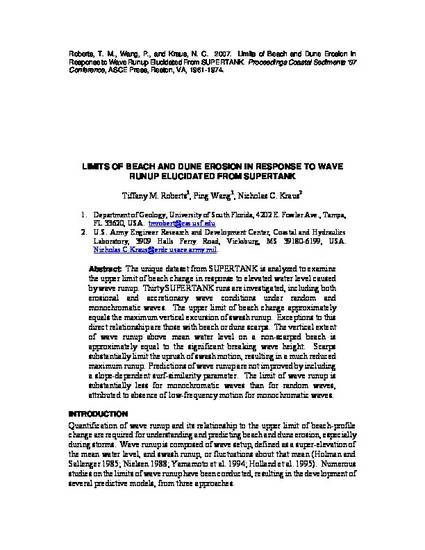
- beach erosion,
- nearshore sediment transport,
- wave breaking,
- cross-shore sediment transport,
- physical modeling,
- surf zone processes
The dataset from the SUPERTANK laboratory experiment was analyzed to examine wave runup and the corresponding upper limit of beach-profile change. Thirty SUPERTANK runs were investigated that included both erosional and accretionary wave conditions with random and monochromatic waves. The upper limit of beach change UL was found to approximately equal the vertical excursion of total wave runup, Rtw. An exception was runs where beach or dune scarps were produced, which substantially limit the uprush of swash motion to produce a much reduced total runup. Based on the SUPERTANK dataset, the vertical extent of wave runup above mean water level on a beach without scarp formation was found to approximately equal the significant breaking wave height, Hbs. Therefore, a new and simple relation Rtw = Hbs is proposed. The linear relationship between total runup and breaking wave height is supported by a conceptual derivation. In addition, the relation is extended to UL = Rtw = Hbs to approximate the upper limit of beach change. This formula accurately reproduced the measured upper limit of beach change from the three-dimensional experiments in the Corps' large-scale sediment transport facility. For the studied laboratory cases, predictions of wave runup were not improved by including a slope-dependent surf-similarity parameter. The limit of wave runup was substantially less for monochromatic waves than for random waves, attributed to absence of low-frequency motion.
Journal of Coastal Research, v. 26, issue 1, p. 184-198
Available at: http://works.bepress.com/pingwang/89/